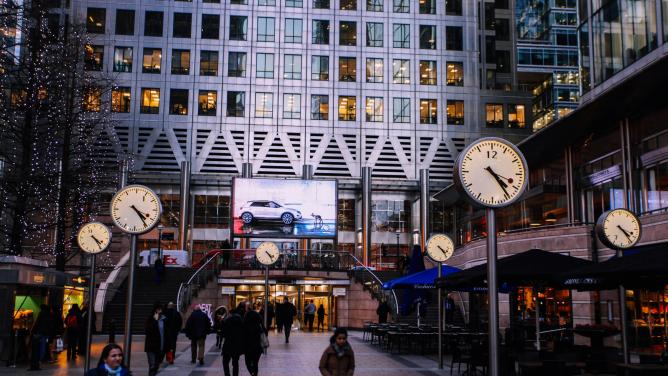Roads: The bedrock of current and future mobility
With a modal share of 88.4% of goods transport and 87% of passenger transport in France, the road today occupies a central position in mobility. In Europe, road transport accounted for 77% of inland freight transport. This figure hovers around 65% in the US for freight, but rises to almost 90% for transport modes for commuting. These figures show one thing: despite the efforts made to promote multimodal transport solutions, the road’s dominance is likely to continue in the future. “When you look at foresight scenarios for the coming decades, even when the modal share is significant, roads remains largely in the majority transporting more than three quarters of people and goods,” explains Christophe Hug.
Infrastructure under more strain than ever
In this context, road infrastructure maintenance and adaptation measures are proving to be important issues, which are evolving rapidly in the wake of climate change. “Extreme weather events are happening at an increasingly alarming rate. When designing a road system, there are meteorological standards which enable you to calculate the size of your infrastructure, based on rainfall, for example. However, the weather data used to build the road network no longer corresponds to the reality today,” explains Hug.
This trend is particularly visible in extreme climates, like in Canada where its vital ice roads are at threat, or in tropical countries such as Timor-Lieste, which struggle to maintain an effective road system against heavy rains. But it is also prevalent in milder climates too: “In 2016, the highway north of Orléans in France was submerged by 1.50m of water for two weeks. We used a boat to take the highway and when the water disappeared, it left behind fish,” says Hug. In the UK, the climate crisis has created an unprecedented increase in potholes, while in the US, 44 million drivers reported damage to their vehicles caused by the declining state of roads! To combat this pothole plague, a rather interesting technological transformation is taking place in maintenance solutions, thanks to autonomous repair drones and self-healing asphalt pavements.
To read also : Imagining mobilities in 2050.
Reduce the environmental impact of roads
While roads are the victims of climate change, they are also to blame for our most polluting transportation solutions, and as such, ambitious policies are required to reduce their impact. “Road use represents 94% of CO2 emitted by the transport sector. We cannot continue to use roads in the same way if we want to meet our low-carbon economy goals,” explains Hug.
If this transformation is to be a success, a certain number of levers can be activated. The first consists of optimizing current usage. “What this means is developing car-pooling, developing multi-modal transport hubs, developing highway public transport, and developing special reserved lanes for certain types of transport,” details Hug, citing Longvilliers multi-modal hub as an example, whose combination of carpooling and an express coach lanes on the motorway connecting Massy and Dourdan RER suburban train stations has proven to be effective. The second lever concerns supporting the deployment of light- and heavy-duty electric vehicles, which involves developing adequately-sized charging station infrastructure, as well as experimenting with innovative solutions. “On the A10 motorway south of Paris, we are going team up with two major motorway operators to carry out an electric motorway pilot scheme which charges vehicles in real time as they drive, either by induction or by a conductive rail,” explains Hug.
Low-carbon maintenance and construction
Apart from road use, if roads are to lessen their environmental impact, an evolution in maintenance and construction practices is needed. The concept of circularity should be the first reaction, or “using the road to build the road.” “These days, when we carry out road upgrades, 100% of the materials extracted are recycled, and 50% are reused on site,” explains Hug, highlighting the rapid progress in the sector.
Effective construction site management can also help reduce the carbon footprint, by optimizing the scheduled use of machinery, using biofuels and low-carbon cements, or even by transporting and delivering materials supplies by river or rail freight. “Our goal is to reduce our construction site emissions by 50% by 2030. We’ve been at a 20% reduction rate since 2019,” details Hug.
Road data
Data is an essential ally in adapting road infrastructure. These days, highly accurate information can be retrieved in a myriad of ways using technology applied either to the road itself or via vehicles using a whole range of monitoring technologies. In Taiwan (but also in Turkey, Canada, the US and France), Highway Bureau inspection vehicles equipped with panoramic cameras and lidar are already being deployed on roads. Thanks to such artificial intelligence tools, road maintenance identification can be automated.
When it comes to road maintenance, Hug outlines his prediction for the short-term: “Tomorrow, we’ll have precise and almost continuous imagery of the quality of road conditions thanks to digital twins of road infrastructure. Daily surveillance will be carried out by drone, satellite or a vehicle equipped cameras or lidar. Artificial intelligence will analyze any changes, which will trigger routine maintenance procedures and predictive maintenance actions.”
To read also: Innovation has found its bearings : discover our yearbook 2024.



